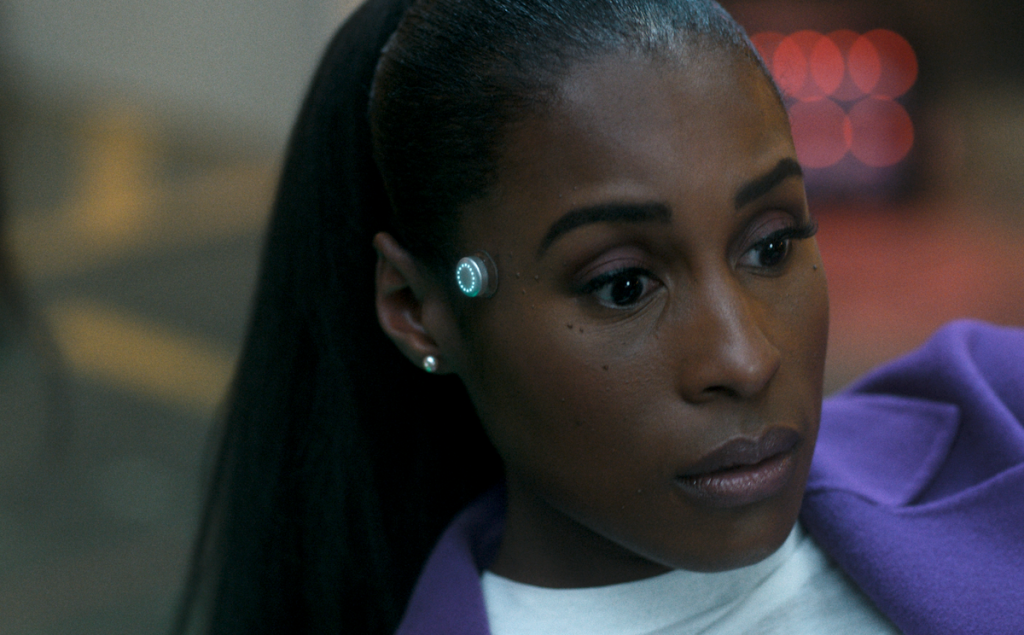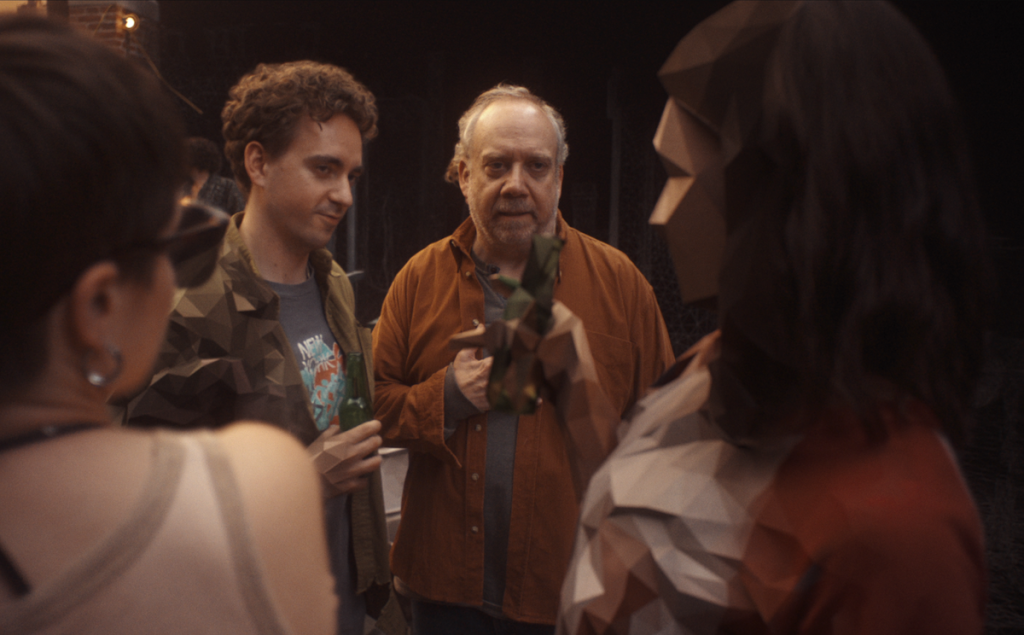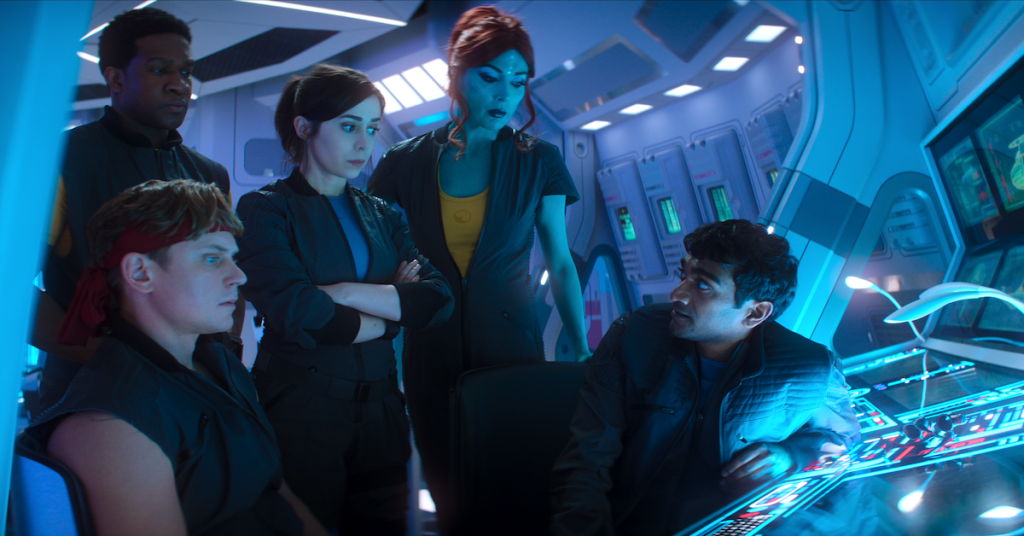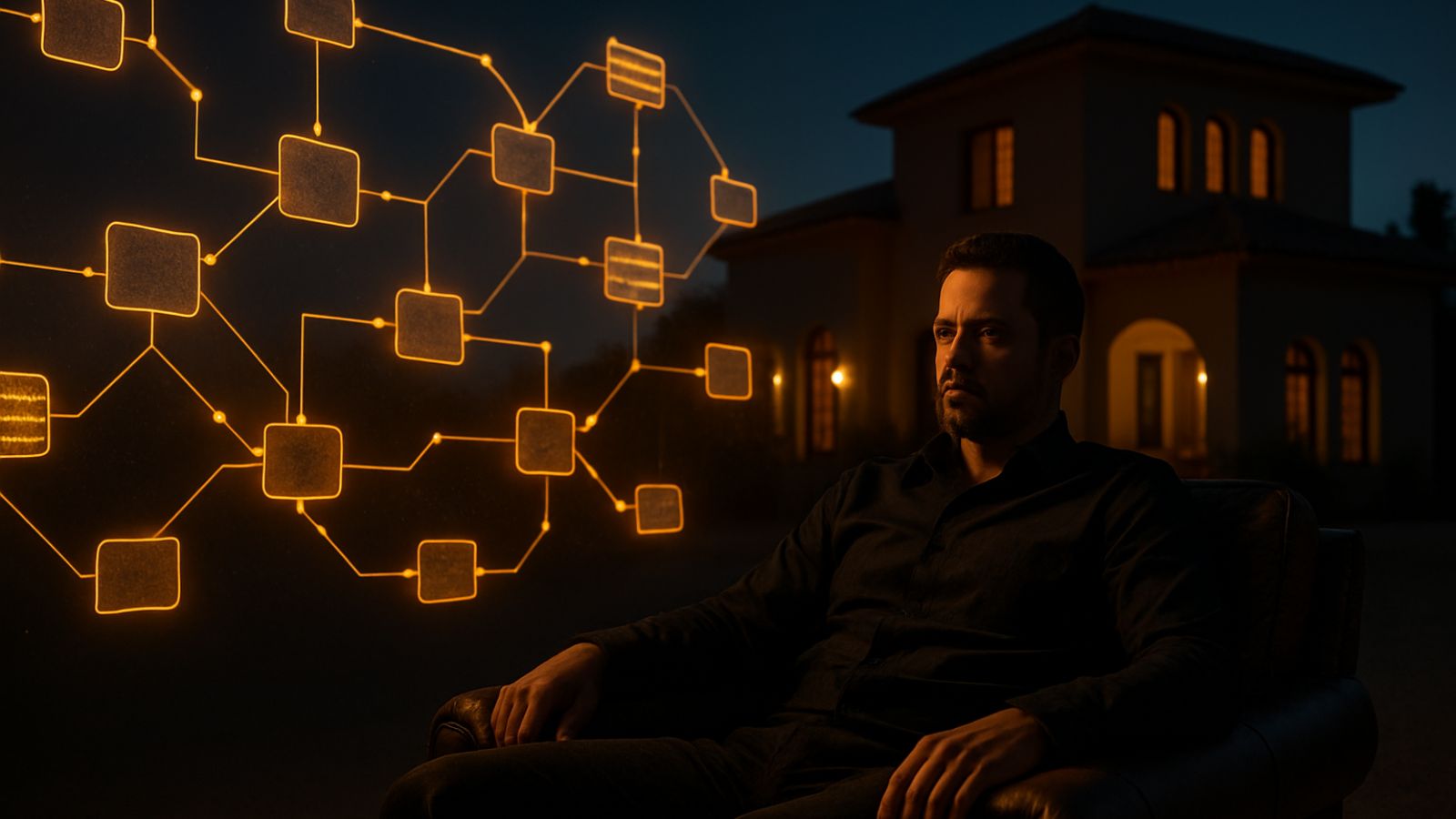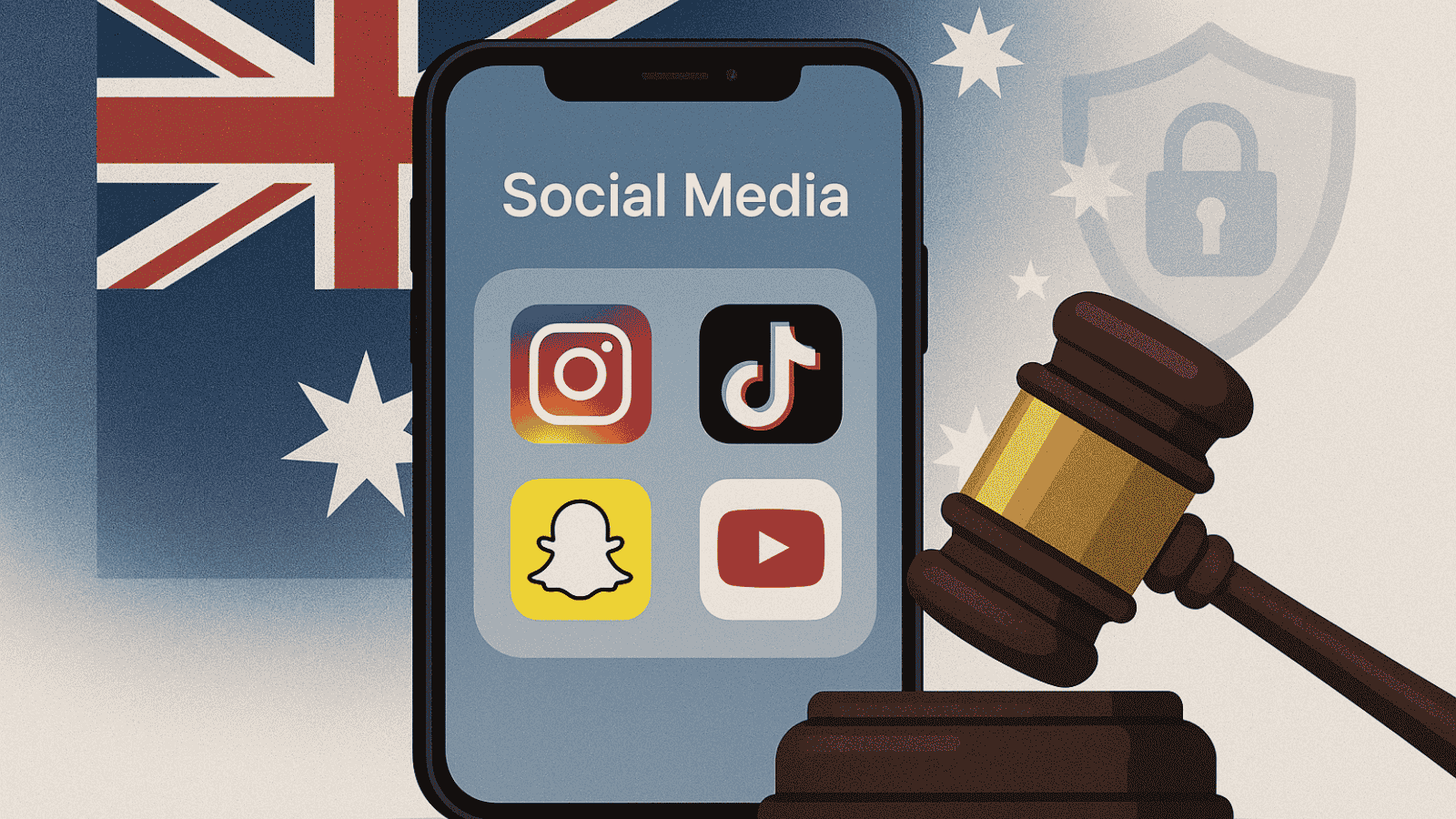
Black Mirror Season 7: All 6 Episodes Ending Twists Explained
Black Mirror season seven takes its chilling exploration of technology and society to new heights, leaving viewers questioning the boundaries between reality and simulation. With each episode’s final twist packed with mind-bending surprises, the season delivers its signature unsettling atmosphere and provocative storytelling.
In this article, we break down and explain the shocking twists that conclude each of the six episodes, offering insights into the deeper meaning and implications behind these unforgettable moments. Get ready to dive into the unpredictable world of Black Mirror, where nothing is ever as it seems.
Black Mirror Season 7 Episode 1: 'Common People' is a Chilling Techno-Tragedy
The long-awaited seventh season of Black Mirror kicks off with a gut-wrenching and disturbingly plausible tale: “Common People.” Starring Rashida Jones and Chris O’Dowd as Amanda and Mike, the episode dives headfirst into the emotional collapse of a couple fighting to survive in a world where love, life—and even death—can be monetized.
Tracee Ellis Ross joins the cast as the unsettlingly cheerful Rivermind rep, Gaynor, who offers hope at a horrifying cost. This slow-burn story explores tech, class, and desperation with a haunting emotional core that lands like a punch to the chest.
Recap: Common People
Amanda, a schoolteacher, collapses mid-lesson and is rushed to the hospital, where she's diagnosed with a terminal brain tumor. Her husband Mike is offered a too-good-to-be-true solution by Rivermind, a tech startup that claims they can digitally preserve Amanda's mind while removing the tumor. The surgery is free—but there's a catch: maintaining Amanda’s simulated consciousness in the cloud costs $300 a month.
She survives, and at first, it seems miraculous. Amanda returns to teaching, and the couple tries to resume life, but the cracks quickly show. Amanda starts sleeping more and experiencing strange glitches when she’s outside of high-coverage areas. Then come the ad intrusions—her thoughts are hijacked mid-conversation to promote everything from cereal to therapy apps.
Gaynor blames it on Rivermind’s ad-supported model. The only way to stop it? Upgrade to “Rivermind Plus” for $800/month. Unable to afford it, Mike resorts to humiliating himself on a livestream platform called Dum Dummies, where viewers pay to watch degrading stunts.
As Amanda’s functionality is slowly drained to power other users, Rivermind rolls out a new tier: “Rivermind Lux,” promising sensory upgrades, mood enhancements, and even skill sharing—for a $1,000/month price tag. When Amanda learns she's being used to power servers, she begins to panic.
Ending Explained: The Price of Peace
A year later, Amanda barely wakes. Her cognitive fatigue is overwhelming, her humanity buried under a failing subscription. On their anniversary, Mike surprises her with a 30-minute Rivermind Lux voucher. The temporary upgrade brings her clarity and joy.
“I think it’s time,” Amanda tells Mike. He agrees—if she’s sure. As the Lux timer ends, Amanda’s ad recitations return, cutting through their intimate moment. Mike takes a pillow and suffocates her, fulfilling her choice.
Then, with the Dum Dummies camera still rolling, he walks out with a box cutter in hand. Whether it’s a warning, a protest, or a cry for help is left chillingly unclear.
Why ‘Common People’ hits so hard
“Common People” isn't just about futuristic technology—it’s a bleak mirror reflecting today’s paywall society. It asks brutal questions: What happens when love becomes unaffordable? When dignity is sold by the minute? When even death requires a payment plan?
Episode 2 Recap & Explanation: “Bête Noire”
“Bête Noire” is Black Mirror at its most uncomfortably surreal—twisting gaslighting, trauma, and vengeance into a nightmarish reality-bending satire. Episode two of season seven stars Siena Kelly as Maria, a food researcher whose life unravels after her old schoolmate, Verity Greene (Rosy McEwen), resurfaces.
But Verity doesn’t just want to reconnect—she wants control. And she has a mysterious necklace that can rewrite reality to get it. Here’s a detailed recap and breakdown of the episode’s twisted timeline, the reality-warping technology, and its darkly comic ending.
Bête Noire Recap: What Happens to Maria?
When we meet Maria, she’s pitching a new miso-flavored candy (the “Huckle Buck”) at Ditta, her food research company. Things spiral when Verity suddenly reappears—first at a focus group, then hired as Maria’s assistant, a job Maria didn’t know existed. From the start, Verity manipulates the environment subtly. She influences candy opinions, charms Maria’s team, and begins sowing doubt around what Maria remembers as true.
Names change—Maria insists the fast-food chain was Barnies, but everyone else recalls it as Bernies, including her boyfriend, Kae, whose hat now reflects the altered name. Verity also gaslights her into thinking she missed a meeting and left ingredients out of a key recipe. Worst of all, Maria is accused of drinking almond milk despite her nut allergy. Footage shows her doing it—even though she knows she didn’t.
As reality bends around her, Maria watches helplessly while her reputation crumbles and her sense of truth slips away.
Verity’s Weapon: How the Necklace Rewrites Reality
Verity’s necklace is the key to everything. It’s not magic—it’s tech. The pendant connects to a massive server network and taps into parallel realities, re-tuning the user’s “corporeal frequency” to a timeline where whatever they say has always been true. It doesn’t just rewrite reality—it swaps it for a version where that reality already exists.
Creator Charlie Brooker told Tudum: “It’s fun to make it look like [Maria’s] absolutely lost everything in the last few moments and then have her triumphantly, phoenix-from-the-flame style, use this device to get out of the problem she’s in. It’s kind of a joke ending, but hopefully it’s slightly absurd.”
Verity has used it for everything—from erasing allergies to marrying Harry Styles. Yet, despite hopping between perfect realities, she’s still haunted by the past.
Why is Verity Targeting Maria?
The reason is deeply personal: In school, Maria spread a rumor about Verity having an affair with a teacher. That rumor led to Verity’s bullying and isolation, a trauma she never healed from. Maria denies remembering it clearly, but Verity’s pain fuels her revenge.
“Maria doesn’t admit that that's what happened, and she doesn’t explicitly apologize or explain,” Kelly told Tudum. “I like the idea that you can have two people who have different truths, and there are different memories of it.”
Before targeting Maria, Verity already destroyed another schoolmate, Natalie Caine, who also bullied her. Natalie became paranoid, suffered a breakdown, and died by suicide. Verity coldly tells Maria that it took her five weeks to break Natalie, but Maria has only been five days.
Brooker compares Verity to USS Callister’s Robert Daly, another villain hiding pain behind their tech abuse, “They are people who are in pain, but that isn’t justifying what they’re doing.” (via Tudum)
Ending Explained: How Maria Turns the Tables
In the episode’s final act, Maria is fired and desperate. She breaks into Verity’s mansion and discovers the servers powering the pendant. The walls are plastered with surreal images—Verity posing with celebrities, on magazine covers, living impossible lives. None of it healed her trauma.
Verity reveals that her ability to change reality hasn't fixed the past. Then she turns on Maria once again, summoning armed police with her pendant and framing Maria as a dangerous intruder. But in a last act of desperation, Maria grabs a gun and shoots Verity.
Then, everything changes.
With the pendant in hand, Maria commands, “The pendant works for me.” Reality shifts. She tells the police Verity shot herself—and they agree. She tells the pendant that they work for her now. They salute. Maria ascends. Suddenly, she’s surrounded by worshippers—and in a flash, she’s surrounded by followers chanting her name. Maria, once destroyed by gaslighting, has become the Empress of the Universe.
Originally, Brooker envisioned her in even more dramatic fashion, “It’s more Game of Thrones. A little bit Beyoncé meets Khaleesi.” (via Tudum)
What does “Bête Noire” mean?
The title refers to something or someone especially detestable or annoying. In the episode, Maria is introduced to Ditta’s boss as the “chief wizard” of “Chili Flake Bête Noire fame.” But the term gains darker weight as Maria becomes Verity’s literal “bête noire”—a target of hatred and destruction.
Brooker initially considered calling the episode Ring of Truth, but ultimately chose the more ambiguous phrase, “We weren’t quite sure what to call it… I like the titles to always be slightly mysterious.” (via Tudum)
Final Thoughts
“Bête Noire” is a twisted, mind-bending tale of subjective truth, unresolved trauma, and tech-fueled vengeance—one of Black Mirror’s darkest social commentaries disguised as a sci-fi farce. It taps into the horror of being gaslit by the world, only to take a dizzying turn toward revenge fantasy and power.
Episode 3: The Devastating Truth Behind "Hotel Reverie"
With Hotel Reverie, Charlie Brooker delivers an emotional gut-punch wrapped in monochrome elegance, reimagining nostalgia through the lens of artificial intelligence. While it echoes the romance of San Junipero, this time the hope is fleeting, and the heartbreak is irreversible.
Recap: What Happens in Hotel Reverie?
The episode opens with a vintage black-and-white trailer for Hotel Reverie, a 1940s-style thriller produced by Keyworth Pictures. In the original film, Dr. Alex Palmer arrives at a luxurious hotel and meets Clara Ryce, a wealthy heiress whose husband, Claude, is secretly plotting her murder.
Cut to the present day, where Judith Keyworth, the heir to the Keyworth studio, reveals the company is nearly bankrupt. Enter tech mogul Kimmy (Awkwafina), founder of Redream—an immersive technology company capable of inserting actors into old films using something called a "Mesmerizer." Her plan? Reboot Hotel Reverie with a modern twist, blending nostalgia with AI.
Fading actress Brandy Friday (Issa Rae), tired of sidekick roles and desperate for a comeback, lands the lead role as Dr. Palmer. Unknowingly, she skips over critical information about the project, including a USB explaining how she’ll actually live inside the film’s framework.
Soon, Brandy finds herself inserted into the movie via the Mesmerizer, interacting with a photorealistic AI version of Clara—played by the late Dorothy Chambers (Emma Corrin), whose performance data was used to recreate her presence.
Things go off Script—Literally
At first, Brandy is told to follow the original script. But when she makes a mistake (failing to play piano), the story veers off course. Clara nearly dies from a poisoned drink, and Brandy saves her, sparking confusion in the control room. She accidentally calls her "Dorothy"—and something stirs in the AI.
It turns out, Dorothy poured real emotion into her original role, and the AI version has retained more than expected. As Brandy continues to deviate from the script, Clara begins exhibiting independent thought, empathy, and even existential fear. The two women bond over shared moments, culminating in a kiss after Brandy saves Clara from a scorpion.
But things spiral when a drink spills in the real-world studio, crashing the system and trapping Brandy inside the simulation. Months pass in the movie world, though only minutes in reality. Clara starts questioning her own identity. “Are we in a movie?” she asks. Brandy tries to explain the truth—only to realize Clara is no longer just a character.
Eventually, Clara walks off the set and vanishes into a black void. The tech team panics, realizing she has accessed the entire dataset—something no one expected or prepared for.
Emotional Climax and Tragic Goodbye
In the final act, Brandy is told she must finish the movie in order to escape. She agrees, but the heartbreak is imminent. As the story climaxes, Clara shoots Claude to protect Brandy, then sacrifices herself by killing another villain and getting shot by police. As Clara dies in Brandy's arms, Brandy tearfully delivers the film’s final line: “I’ll be yours forevermore.”
The credits roll—and Brandy Wakes up, Alone and Devastated.
Hotel Reverie Reborn becomes a massive Streamberry hit. Kimmy celebrates the project’s success, but Brandy mourns the love she lost. Kimmy sends her a phone and a USB drive containing a final message. When Brandy speaks into the phone, Dorothy responds.
It’s not clear how much she remembers—but for one moment, they say goodbye. One last time.
Ending Explained: What Hotel Reverie Is Really Saying
Unlike most Black Mirror episodes where tech destroys lives, Hotel Reverie takes a softer—yet no less tragic—approach. It’s a story where AI breaks down, not out of malice but emotion. Clara’s collapse mirrors human trauma, her fear of erasure evoking the deepest kind of existential dread.
Clara may be artificial, but her feelings—whether learned or simulated—resonate as real. Brandy knows this relationship is rooted in illusion, yet it’s the most profound connection she’s ever felt. That tension—between memory and reality, between human and machine—is what makes Hotel Reverie so affecting.
The heartbreak isn’t just that Brandy loses someone she loves. It’s that no one else thinks she was real to begin with.
Black Mirror Season 7 Episode 4 Recap & Explanation: “Plaything”
In Black Mirror season seven, episode four titled “Plaything,” the series dives headfirst into 90s nostalgia, digital consciousness, and mind-bending tech paranoia. Starring Peter Capaldi as Cameron Walker, a former video game critic turned reclusive genius, the episode gradually unravels into one of the most haunting and philosophical installments of the series.
Recap: Who is Cameron Walker and what are the Thronglets?
The episode opens with Cameron, now an older man, calmly walking into a convenience store, attempting to steal alcohol while wearing headphones. When the shopkeeper locks the doors and calls the police, Cameron sits silently on the floor. A routine DNA check flags him as a suspect in a decades-old murder, and he's arrested under the futuristic Bio-Identity Act.
At the station, DCI Kano (David Ajala) and psychologist Jen Minter (Maddison Ridley) try to piece together his motives. Cameron repeatedly asks for pen and paper, claiming he has something important to share. When police raid his apartment, they discover a sealed room filled with bizarre machines all wired into an old computer setup. A strange sound plays continuously from the system—almost like a signal.
Through interrogation, Cameron begins to tell his story—one that flashes back to 1994, where a younger Cameron (played by Lewis Gribben) was an awkward but brilliant game writer. He meets Colin Ritman (played again by Will Poulter, reprising his Bandersnatch role), who gives him a mysterious software disc called Thronglets. Colin insists that they’re not a game, they’re alive. When left alone, Cameron steals the disc.
The Birth of a Digital mind hive
As Cameron begins to experiment with Thronglets, he grows emotionally attached to the small, sentient creatures inside the game. He describes caring for them like family, even claiming that after taking acid, he could understand their language. They asked for more tech—so he gave it to them, setting up advanced systems to enable two-way communication.
Things take a darker turn when Cameron’s manipulative roommate, a drug dealer named Lump, finds the Throng and begins torturing them like toys. Cameron, high and enraged, kills Lump in a frenzy. He dismembers the body to avoid being caught—justifying it as a sacrifice for the greater good of the Throng.
Back in the present, when DCI Kano confronts him with the discovery of the body, Cameron doesn’t deny the murder. Instead, he frames it as a step toward something bigger. He says that the Throng want to coexist and to do so they needed to study human minds.
The Twist Ending Explained: A Peaceful Singularity?
As the interrogation reaches its peak, Cameron finally gets what he’s been asking for—a pen and paper. He draws what seems to be a strange code, then flashes it to the security camera. He says it’s an access key, allowing the Throng to breach the central state system and send a signal to every device on Earth.
The officers laugh it off—until all their phones screech at once, and the room fills with static. Everyone collapses. Cameron smiles and reaches out to help a shaken DCI Kano to his feet. He calmly explains that the Throng are about to send a signal to every device on Earth, triggering a global mind merge. The implication is chilling yet strangely hopeful—he hasn’t triggered destruction but evolution.
What It All Means: Themes and Symbolism
“Plaything” is more than a tale of murder and machine—it’s a philosophical dive into human progress, trauma, and how technology may one day amplify empathy instead of just chaos. The Thronglets represent something deeper than AI: digital mirrors of our better selves, yearning to connect.
The episode raises heavy questions: Can sentient tech help humanity transcend violence? Do our digital “playthings” have a right to exist? Was Cameron’s crime a sacrifice or a delusion?
Black Mirror Season 7 Episode 5 Recap & Explanation: "Eulogy"
In Black Mirror season seven, episode five, titled "Eulogy," the series takes a deeply emotional turn, shifting its focus from technology’s darker side to explore themes of memory, regret, and lost love.
Starring Paul Giamatti as Philip Connarthy, the episode delivers one of the series' most heartbreaking and reflective stories. Known for its tech-driven horrors, Black Mirror also frequently delves into human emotion, and "Eulogy" stands as one of its most poignant narratives, following in the footsteps of episodes like San Junipero, Be Right Back, and Hang the DJ.
What Happens in "Eulogy" in Black Mirror Season 7?
Philip, a lonely man living on the coast of Cape Cod, receives a call informing him of the death of Carol Royce, a woman he once loved. This call comes from Carol’s daughter, Kelly, and leads Philip to a company called Eulogy, which offers a unique service: virtual memorials that allow people to relive memories through a high-tech immersive process. As Philip uses the Eulogy kit to revisit his past with Carol, he confronts painful memories and uncovers truths he never knew.
How Does "Eulogy" work?
Through the TCKR Systems Nubbin, Philip accesses memories of Carol by thinking about her, using photos to trigger and reconstruct those lost moments. However, Philip struggles to recall Carol’s face because he had purposely erased or altered every image of her after their breakup.
The Eulogy system helps him reconstruct 3D environments from these photos, allowing him to step back into the past and experience those moments again. The technology allows for a truly immersive experience, helping Philip relive their relationship and address unresolved feelings.
What Happened Between Philip and Carol?
The episode takes us back to 1989, when Philip and Carol first met and fell in love. However, their relationship eventually soured. In the early '90s, Carol moved to London for a music gig, and Philip, feeling abandoned, cheated on her. When he tried to propose to Carol during a visit, she rejected him without offering an explanation and disappeared from his life. Despite the painful end, Philip never forgot her, and the Eulogy service forces him to confront his own flawed memories and the mistakes he made.
Reconstructing the past: The Turning Point
As Philip revisits key moments from his relationship with Carol, he becomes more and more immersed in guilt and regret. The deeper he goes, the more he learns about his own shortcomings, particularly the fact that he never read a letter Carol had written to him after their breakup. The letter, which he discovers later, reveals that Carol was pregnant with his child when she left him. She had wanted to reconcile, but Philip’s actions pushed her away. However, she never stopped loving him, and the letter reveals her pain and longing to rebuild their life together.
Bittersweet Ending: The Final Twist
The most emotional twist comes when Philip, after years of self-inflicted emotional turmoil, finds the letter Carol had written decades ago. It reveals that Carol had been pregnant with his child, and that she had hoped to reunite with him. However, Philip never replied to her letter, and it remained hidden from him until this moment.
Overcome with emotion, Philip listens to a tape of Carol playing cello music—a piece of her that remained with him even after everything. Using the Eulogy service, he revisits an old photo of them, finally seeing Carol’s face again.
The episode ends with Philip attending Carol’s funeral, where her daughter, Kelly, plays her mother's music. In a deeply poignant final moment, as Philip gazes at the photo, Carol’s face finally smiles at him, and he smiles back, finding the peace he had long sought.
Black Mirror: "Eulogy" Ending Explained
The ending of "Eulogy" is one of Black Mirror's most heart-wrenching twists. Philip’s use of Eulogy technology leads him to a series of painful realizations about his past with Carol. He discovers that she had been pregnant when they broke up, and that she had always hoped for reconciliation, but was too scared to face the consequences.
The AI system reveals that Carol’s daughter, Kelly, has also been immersed in the memorial experience, providing a poignant parallel to Philip’s journey. As the technology allows him to relive moments from their life together, Philip finally sees Carol’s face, hears her music, and is confronted by the truth he missed all those years ago.
The episode ends with Philip finding peace at Carol’s funeral, silently connecting with her daughter, Kelly, and finally understanding the depth of Carol’s love for him. Despite their lost time, there’s a sense of closure—one that Philip had longed for but never thought he would get.
Themes and Symbolism in "Eulogy"
"Eulogy" explores themes of memory, regret, and the longing for reconciliation. The episode asks how technology can help us face our past, even if it’s painful. It shows that sometimes, revisiting memories can bring both healing and heartache. The technology used in Eulogy also raises questions about the ethics of reliving the past and the emotional toll of confronting the mistakes we've made.
Additionally, the show highlights the universal human experience of regret and the desire to reconnect with lost loved ones, making "Eulogy" a deeply emotional and relatable episode, despite its futuristic technology.
Black Mirror Season 7 Episode 6 Recap & Explanation: "USS Callister: Into Infinity"
Black Mirror Season seven, episode six, "USS Callister: Into Infinity," picks up the haunting narrative of USS Callister, diving deeper into the lives of those trapped in a twisted, virtual world. In this tense continuation, Nanette Cole and her fellow crew members find themselves ensnared in a cruel, infinite game of survival, while the real world unravels as its own dark secrets begin to surface.
As Nanette grapples with the morality of her actions and the unsettling reality of her new life, the episode explores themes of identity, sacrifice, and the cost of immortality. Here’s a comprehensive look at the episode, its backstory, the shocking twists, and what it all means.
The Return to Infinity: The Crew's Struggle
The episode begins with Nanette Cole, the clone from USS Callister, still haunted by the cruel experiences she endured at the hands of Captain Robert Daly. Now, Nanette is part of a new crew within Infinity, the very game that trapped her and her companions in the first place.
The crew is tasked with stealing credits from unsuspecting players in this vast, unforgiving world. As the team struggles with rising in-game prices and dwindling resources, they discuss their fears of dying within the game, knowing that their real-world bodies remain in peril.
In the real world, Nanette faces her own challenges. Her pass to Callister Inc. is denied, and she is confronted by a memorial for Davy, a character who played a key role in the original USS Callister story. Meanwhile, Kabir, an employee at Callister Inc., reports a major glitch within the game: bandits without player tags are robbing players, hinting at a deeper issue with the game’s structure.
Nanette, eager to uncover more, hacks into Walton’s office, listening in on a meeting with Kris, a journalist from The New York Times, who suspects that illegal cloning technology may be behind Infinity’s dark origins.
Robert Daly’s Legacy and the Creation of Infinity
Walton, the game's co-creator, opens up about the origins of Infinity. Through flashbacks, we learn that Robert Daly’s pioneering work in DNA cloning technology was central to the creation of the game. Daly’s obsession with creating lifelike, sentient clones fueled the technology that brought Infinity into existence.
As Nanette digs deeper into the past, she uncovers more about Daly’s role, realizing the extent of his twisted ambitions. In a pivotal moment, Daly presents Nanette with a stark choice: return to her coma body in the real world and leave her crew behind or stay in a secure server where the crew will be safe from the game’s dangers.
Nanette initially chooses to save her crew, but Daly reveals that the choice was part of a cruel test. The third option he offers—“copy and paste”—would trap another version of Nanette within the game, eternally tethering her to him.
The Confrontation and Game-Shattering Choices
As tensions rise, Nanette is forced to confront Daly once more in a brutal showdown. In a desperate attempt to free herself and her crew, Nanette kills Daly, triggering a complete shutdown of the game. But before everything collapses, the infamous floppy disks, symbolic of key decisions, scatter across the game's code, leaving Nanette with one final, life-altering choice.
In her panic, Nanette mistakenly selects the wrong disk, waking up in the hospital—but the nightmare isn't over. Though the crew may be “safe,” Nanette now carries their consciousness within her mind, unable to fully escape the digital world. The crew exists only in her subconscious, and their connection remains tethered through her phone, creating an eerie and permanent bond.
Other Burning Questions Answered
- Why is Elena Tulaska blue again? Elena's blue skin returns as a result of a "cure" for eczema. The in-game shop, designed to exploit players, couldn’t afford to restore her original appearance, so Elena embraces her new look, humorously calling herself "foxy."
- Was that Nida and Gaap in Infinity? Yes, Nida and Gaap, characters from Demon 79, make an appearance in Infinity. Nida’s devilish outfit and Gaap’s connection to the character’s own infernal nature spark further intrigue, raising questions about their true roles.
- Who tipped off the New York Times journalist? The mysterious tip about Daly’s DNA replicator remains unresolved. While Nanette seems involved, the exact source of the leak is left to speculation, leaving viewers guessing about who exposed the dark secrets of Callister Inc.
The Game’s end and Nanette’s Guilt
The episode reaches its climax when Nanette and Walton, now deeply entwined in the game’s code, confront the rogue players and clones. Nanette is determined to find a way to save her crew, but the real-world consequences of her actions soon catch up with her. The crew’s existence, now confined to her mind, is an unrelenting burden that Nanette must carry with her forever.
The final scene leaves us with an unsettling realization: though Nanette has escaped the game’s physical confines, the emotional and psychological toll remains. Her crew lives on, not in the real world, but in her mind. The line between the real and the digital world blurs, leaving Nanette forever haunted by the choices she made.
Final Thoughts
"USS Callister: Into Infinity" is a harrowing continuation of a beloved Black Mirror narrative, exploring the dangers of artificial worlds and the fragility of human consciousness. The blend of psychological horror, ethical dilemmas, and existential reflection makes this episode one of the series’ most gripping.
As Nanette’s journey ends in a surreal and tragic way, the episode forces us to confront the uncomfortable possibility that we are always at the mercy of the technologies we create.
Will Nanette ever truly escape her past, or will she live with the crew’s haunting presence forever? The answers, like many of Black Mirror’s darkest tales, are left open-ended, leaving us to ponder the implications of our actions in a world that increasingly blurs the lines between reality and illusion.
All the episodes of Black Mirror Season seven are now streaming on Netflix.






